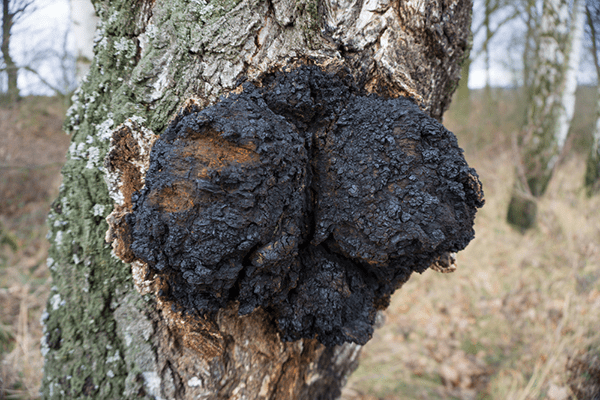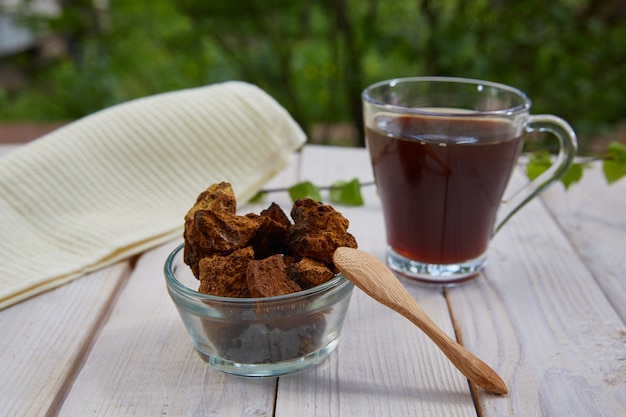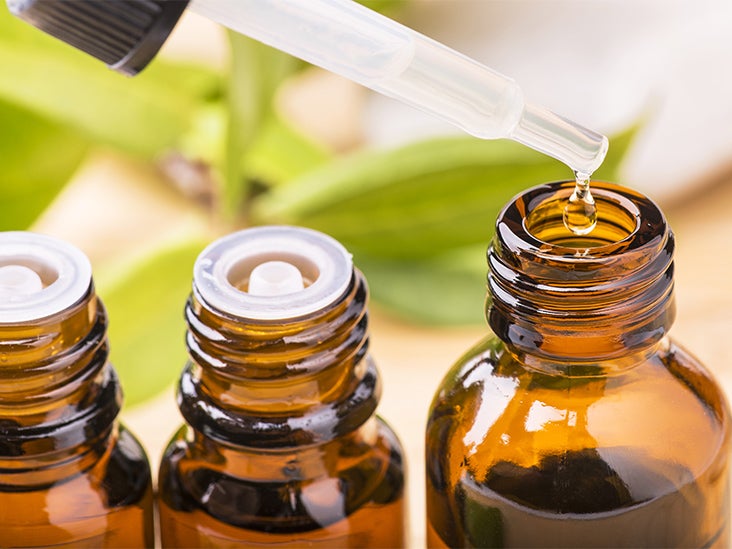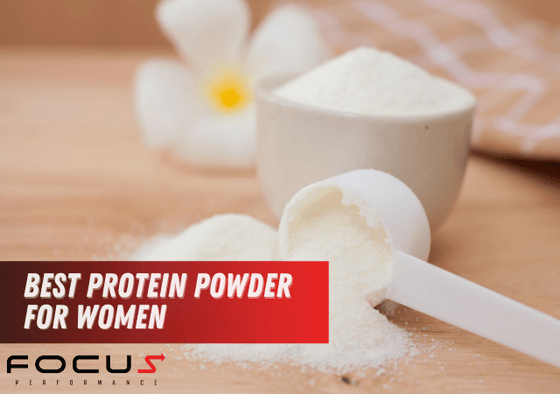
You probably know about the different flavours offered by the mushrooms available today. For many people, mushrooms are a part of their regular diet.
Yet while many varieties of mushrooms can give meals a tasty twist, a lot more exist to give us more than just a simple change in taste.
The Chaga mushroom is often confused due to its unique appearance. It clings to trees and is often mistaken for charcoal because of its darkish, tough look.
Today, researchers are actively studying the potential health benefits of Chaga. The mushroom may contain properties that could, in time, lead to breakthrough medicines.
Inonotus obliquus, commonly called Chaga, is a type of mushroom that primarily grows on birch trees found in Canada, Europe, Asia, and the United States. This mushroom has been used since ancient times in folk medicine, as it is believed to provide numerous health benefits.

As it is exposed to the sun, the external portion of the mushroom becomes black, while its interior remains orange. Chaga has been found to contain huge amounts of melanin including high levels of oxalate (a compound associated with kidney stones).
Some of the most common names of Chaga are black mass, birch canker, conk rot, clinker, and cinder conk. The mushroom has a rough texture that allows it to be powdered and used as tea, tinctures, extracts, and supplements.
Many people believe that taking Chaga either with warm or cold water can release more of its potential medicinal properties. However, reliable data on its nutritional content is very limited.
So far, Chaga has been found to be low on calories and high in fibre while providing antioxidant effects.
Although research on Chaga mushrooms is still ongoing, some studies have indicated its extract to provide people with certain health benefits.
The following are some of the possible health benefits that people can get when taking Chaga today.
A natural response of the immune system, inflammation is essential in helping protect the body against disease. However, studies have found that long-term inflammation is associated with conditions such as rheumatoid arthritis and cardiovascular disease.
Researchers found that in test-tube and animal studies, Chaga extract could potentially affect immunity by reducing inflammation and fight off harmful pathogens.
Chaga promotes the formation of beneficial cells that regulate the immune system to ward off harmful viruses and bacteria. That is why the mushroom has been touted as a means to fight off infections.
Moreover, other studies demonstrated that Chaga can stop the production of pro-inflammatory cytokines that are associated with disease. In one study on mice, Chaga extract was found to reduce inflammation including gut damage by preventing inflammatory cells.
These findings are just a few reasons why many health providers are now selling supplements that contain Chaga.
Several test-tube and animal studies have shown that Chaga could be used to slow down cancer growth or prevent it all together.

In one study on cancerous mice, researchers found that Chaga supplementations resulted in at least a 60% reduction in tumor size on the subjects. Meanwhile, a test-tube study revealed that Chaga extract prevented cancer growth in human liver cells. The same results were found in cancerous cells present in other organs.
Scientists believe that Chaga's anticancer properties may be partly because of its antioxidant capabilities, which help preserve cells from free radical damage.
A particular antioxidant of interest in Chaga is triterpene. In studies, triterpene extract was shown to help eliminate cancerous cells.
However, it is important to note that human studies are required to make direct conclusions regarding the anticancer potential of Chaga mushrooms.
Several animal studies on Chaga showed that it could possibly reduce blood sugar levels in the system. There is a possibility that it could also be used in managing diabetes.

One study on diabetic, obese mice revealed that Chaga extract was able to reduce sugar levels in the blood and resistance to insulin compared to subjects that did not receive the treatment. Meanwhile, another study on similar subjects showed that Chaga supplements were able to decrease up to 31% of blood sugar levels after several weeks.
However, human research has been unavailable at the moment. This predicament makes it unclear whether Chaga could be used to help manage human diabetes or not.
The extract from Chaga could also help lower cholesterol levels and thus minimise the risk of heart problems.
In one eight-week study in rodents with high cholesterol, Chaga was able to reduce the bad LDL cholesterol, triglycerides, and total cholesterol while improving antioxidant presence. Some studies also showed the same results that while Chaga reduces the bad LDL cholesterol, it also increased the HDL cholesterol or good cholesterol.
The scientists believe that the presence of antioxidants in Chaga are the ones responsible for its effects against cholesterol.
Chaga is believed to increase strength and endurance. People in Russia were found to have been using Chaga for centuries to make themselves stronger, particularly during the winter months. However, there is not much solid proof as to why it could increase strength and endurance.
In one study, mice that were given Chaga had been found to swim longer. Researchers theorized that the mushroom may improve stored energy levels and could reduce lactic acid, a by-product of exercise.

Chaga mushrooms absorb an element known as betulin as it grows from the birch tree. This process can be beneficial especially since betulin cannot be digested when directly taken from the birch tree. The mushroom first converts it to a form that can be used by the body.
According to research, betulin helps lower cholesterol, improves insulin sensitivity, and prevents obesity. One study even found that betulin is more effective than cholesterol-reducing drugs.
Additionally, the antioxidant properties of Chaga could provide a positive effect on heart health, including its ability to support healthy blood pressure.

Looking at the right place is one of the first steps in finding Chaga. But where does this mushroom grow?
Chaga can be found in hardwood forests populated by birch trees, especially throughout the northern climatic zones. It grows well in cold climates, such as that in Canada, Russia, and northern China. People have also found them in the United States.

The mushroom grows almost solely on birch trees. Although in some instances it had been found on maple and beech, these sightings are very rare. Additionally, it is possible that the medicinal properties of Chaga harvested from other trees besides birch may be completely different.
It is quite easy to spot a compact mass of Chaga. However, many new foragers may often mistake a tree burl is a Chaga mushroom. However, these tree burls are just standard outgrowth from trees and are not the mushrooms themselves.
Chaga has a dark appearance, particularly darker than the tree it is on. It looks very similar to charcoal. Chaga is not part of the tree but grows out of it as a separate entity.

Inside the hard-crusted outer layer of the Chaga mushroom is a light orange colour. When fresh, it has the same consistency as that of cork. There is a high likelihood that you have found Chaga when you encounter these properties.
The following checklist can help you find Chaga in the wild:
If you have confirmed all of these conditions, then you most likely have found Chaga. When harvesting wild edibles, especially mushrooms, it is essential to be sure that you have gathered the right species. You can check a reputable guide book or other reliable resources if needed.
People can use Chaga as a tea, tincture, supplement, or in powdered form. Food stores do not usually sell fresh Chaga to the public. Those who prefer getting fresh Chaga often forage for them personally. Most health shops sell Chaga in powdered form.

When consuming Chaga as a tea, there are a few options to think about. You want to strain dried Chaga lumps just like in normal tea. You should then add the chunks to hot water and give it some time to brew. Once done, make sure you strain the liquid one more time to remove any fragments.
For powdered Chaga, you should be aware that not all forms dissolve when mixed in water. When buying powdered Chaga mushroom tea, make sure that you read the label to understand the best way to prepare it.

You can add a teaspoon of powdered Chaga to hot water to give you a nutrition-rich beverage. It can be an alternative to coffee without the caffeine.
The purer forms of Chaga powder are not going to dissolve even in hot water. If deciding to use for tea, ensure that you strain the powder first before drinking, similar to how you would prepare herbal tea.
Meanwhile, Chaga supplements have become quite popular in the past few years. These herbal capsules are trending because of the convenience and ease of taking them.
Another alternative that is often used today is Chaga mushroom tincture. This mixture is prepared fresh or in powdered form with varying ingredients. Tinctures are often consumed for ailments.
Chaga mushroom tea can be made easily with hot water mushroom powders. These can be added to coffees, teas, or smoothies since no extraction is needed.
However, Chaga mushroom chunks can be made into tea as well. The following are the steps to prepare Chaga tea from dried chunks.
Since Chaga is quite hard, you will need to break it down to increase its surface area and more readily extract its compounds. You can do this by wrapping the Chaga chunks in a towel, place it on a hard surface, and smash the chunks until it is sufficiently pulverised.
A hammer is the best tool to complete this step. Start with approximately 3 ounces of Chaga chunks and start to break this down into a powdery form. You can refine this mixture further for better efficiency.
You can further break down the Chaga by making it into a powder. This can be done with a grinder or blender or even by using a mortar and pestle.
This step can be skipped if you don’t have any of these tools. However, do keep in mind that the finer the powder, the less time it will take to extract its beneficial compounds later on.
A good extraction ratio for Chaga tea is 3 ounces of its dried powder to around 2.5 to 4 litres of water. Place the Chaga powder in water, mix it a little, and bring this to a boil. Once it starts to boil, lower the heat to simmer.
The time it takes to simmer Chaga depends on how fine it has been grounded into a powder. The golden rule is to let it simmer for at least three hours. If using full Chaga chunks or less pulverised forms of the mushroom consider simmering up to 4 hours.
Once the extraction process is done, you can then strain the liquid using a cheesecloth, fine mesh, or tea towel to remove excess fibre. The final format of the liquid should have a dark colour. The tea has an earthy taste but can be enjoyable to drink.
You can drink the tea as soon as you’re done or put it in the fridge to store it for a few days.
Some people react differently when exposed to various products. Some may be allergic to certain fruits and nuts, shellfish, or dairy products.
For first-time users, using Chaga sparingly at the start is highly recommended. It is better to experience a mild reaction from a small serving rather than go through an emergency because of taking too much. Be extra careful especially if you are sensitive to mushroom products in the past. Human trials on Chaga product intake is very limited, resulting in little to no results for the subjects.
Meanwhile, a common side effect of Chaga is when it is taken alongside other medications. Chaga mushrooms are known to affect blood sugar levels in animals, so diabetic patients or those who regularly use insulin should be cautious.
Chaga also contains a certain protein that can stop blood clotting. This can hinder the use of medications that encourage blood clots, which should be considered especially if a person is preparing for surgery.
Generally speaking, eating raw Chaga is not the best way to receive its potential health benefits. The reason for this is because Chaga needs to be boiled to break down its tough outer layer and extract its nutritional value. Although benefits can still be obtained in consuming raw Chaga, there are better ways to take advantage of it.
People can chew and swallow Chaga chunks, whether bought from a vendor or gathered in the wild. Chaga mushrooms have a unique gummy structure that gives it a unique flavor and sensation when consumed. Although it can be tough, wild Chaga may contain sufficient moisture to make it easy to chew.
Consuming too much Chaga can make a person nauseous due to the presence of fungi in the stomach. It is best to stick to taking small chunks of Chaga to avoid this predicament.
Eating Chaga bought from a vendor can be safer since the seller should have washed it beforehand. But when eating Chaga that was found in the wild, you should wash it yourself to minimise the risk of eating other things that may not be good for the body. That is why eating raw Chaga is not an ideal way of consuming this mushroom.
Another concern with eating raw Chaga is that it is not efficient. As stated earlier, much of the mushroom’s nutritional value can only be obtained when it is boiled in water, to release its properties from its chitin-like walls.

Eating dried Chaga that has been bought from a vendor can be difficult. Chewing through its hard outer layer could harm the teeth as well. Consuming raw Chaga can be a risk, especially for older people who already have existing dental issues. At the very least, the toughness of Chaga can make it a very hard exercise to chew large portions of it over time.
In the end, consuming Chaga straight from the tree is not the best way to benefit from its nutritional content. You are depriving yourself of nutrients that can be better obtained when it is boiled. Meanwhile, you also risk damaging your teeth in the long run.
For many centuries, people have been using Chaga mushrooms for their medicinal properties. It is packed with antioxidants that make it a very good tea or supplement. Furthermore, its extracts have been found to improve immunity, help lower blood sugar, fight off chronic inflammation, and lower bad cholesterol.
It is very clear that Chaga is a food that offers several benefits. The sheer density of the nutrients it possesses and the wide range of positive benefits truly make it a superfood.
Consuming Chaga can help increase one’s resistance to disease, improve digestive health, fight free radicals, and much more. Although scientists are still learning more about Chaga, you can already see that it is a wonderful mushroom that can be very beneficial to human beings.
However, consuming raw Chaga is not the best way to harness its potential capabilities. Although eating Chaga raw still provides some nutritional value, there is a more efficient way of consuming it. Taking raw Chaga does not allow consumers to take advantage of the nutrients that are locked behind its tough outer walls. Furthermore, chewing on this mushroom raw can lead to damaging the teeth.
Some of the best ways to take Chaga is by drinking it as a tea, taking it sublingually as a tincture, or oral intake as a supplement. There are many products sold right now that contain Chaga as one of their ingredients. Optimal Immune is one example.

Before purchasing any supplement, it is best that you first seek medical advice from a doctor.
Despite the benefits we’ve learned about protein powders, not all of them are keto-friendly. Just like any product for people on a low-carb diet, you need to read the label closely to make sure you’re not consuming added carbs and sugars.


Scott Reid
Author
Scott Reid is a 2 x Britain’s Strongest Man U105kg winner (2007 & 2008) and IFSA World's Strongest Man U105kg Competitor. He is an expert in strength and conditioning and also coaches functional nutrition. Scott’s passion for understanding the human body and how to optimise every aspect of it has driven him to study under legends such as Paul Chek. Scott now coaches MMA Athletes, Strongmen and Bodybuilders to name but a few, helping them to implement a well structured diet and become more powerful, explosive versions of themselves.